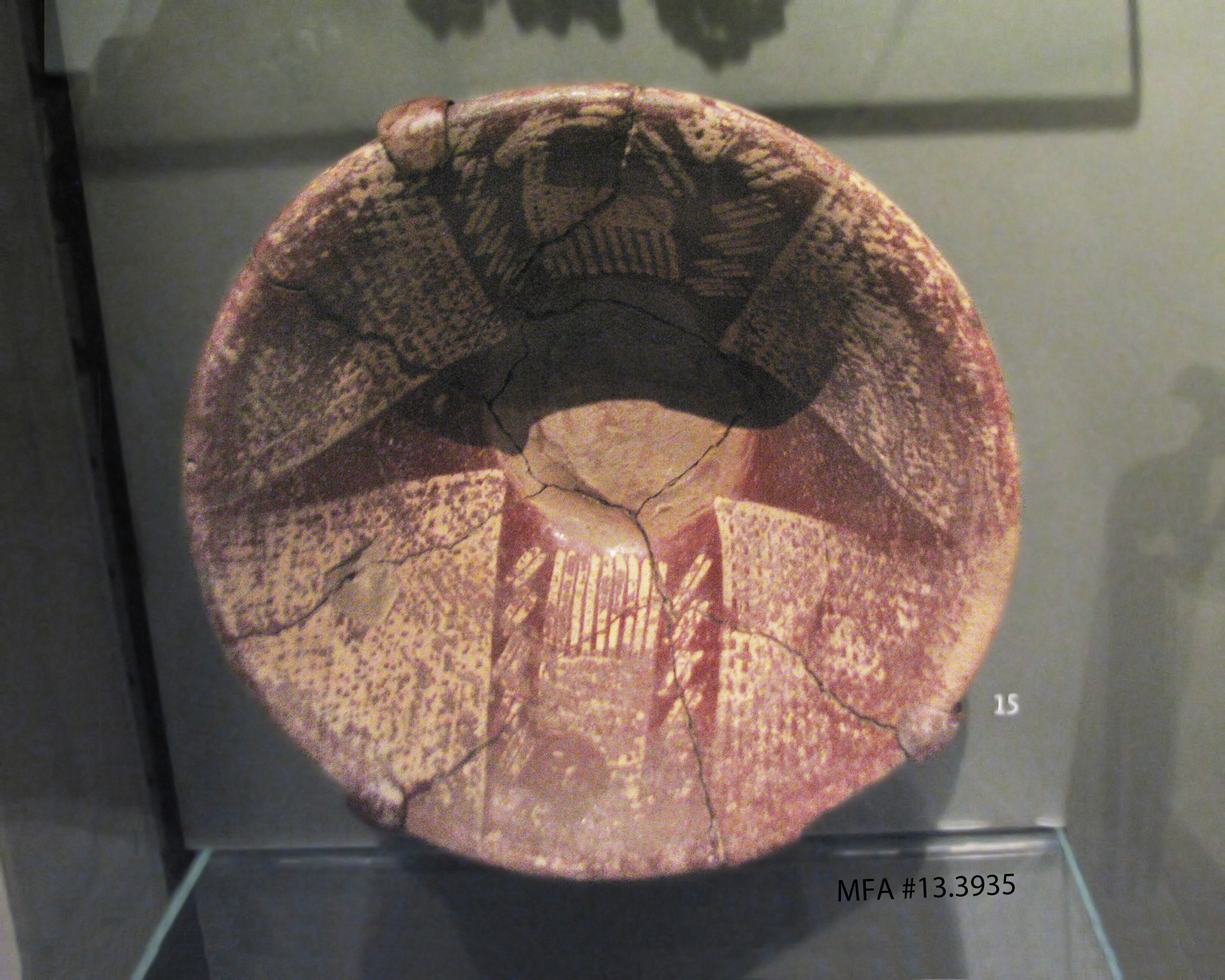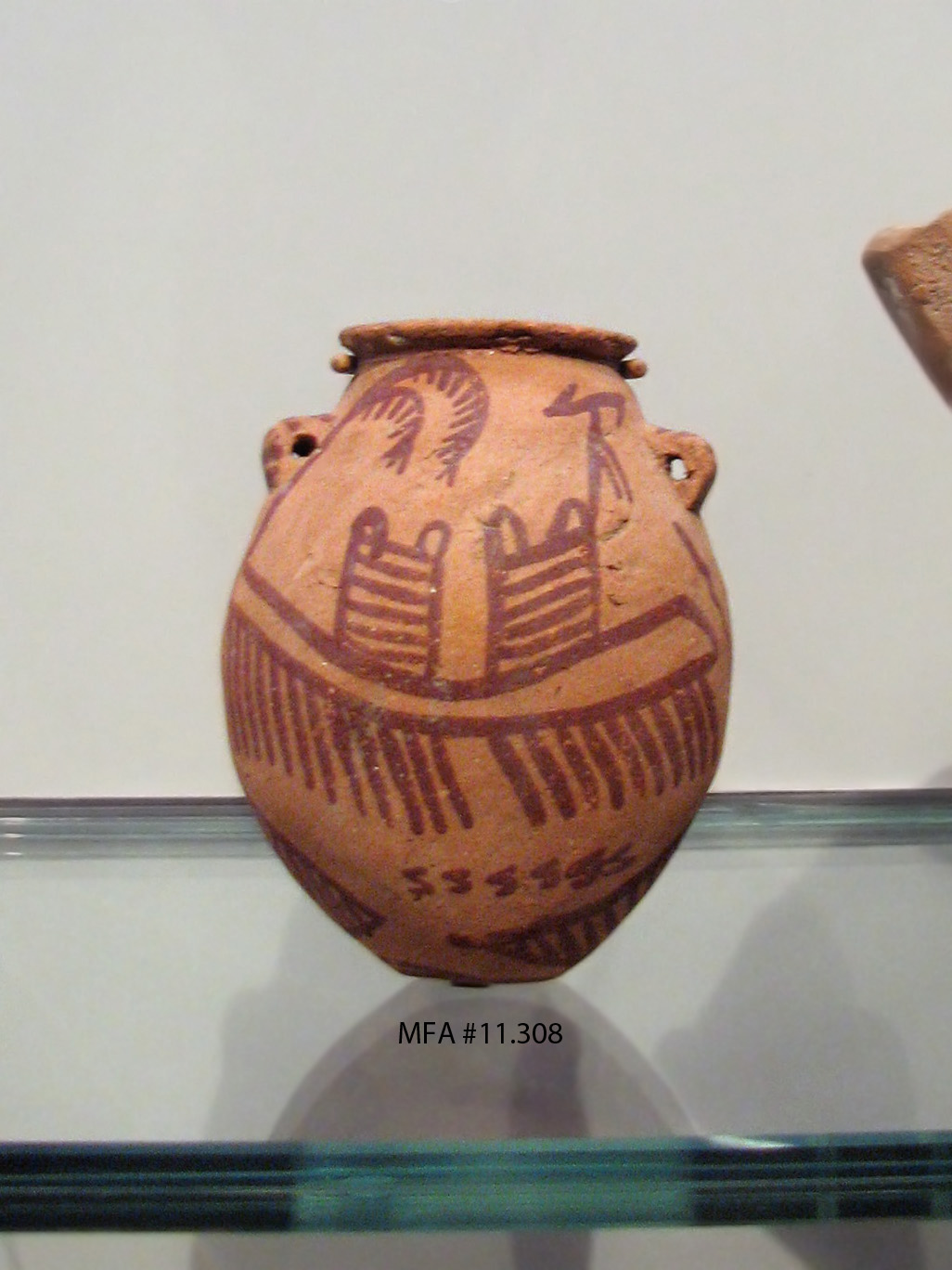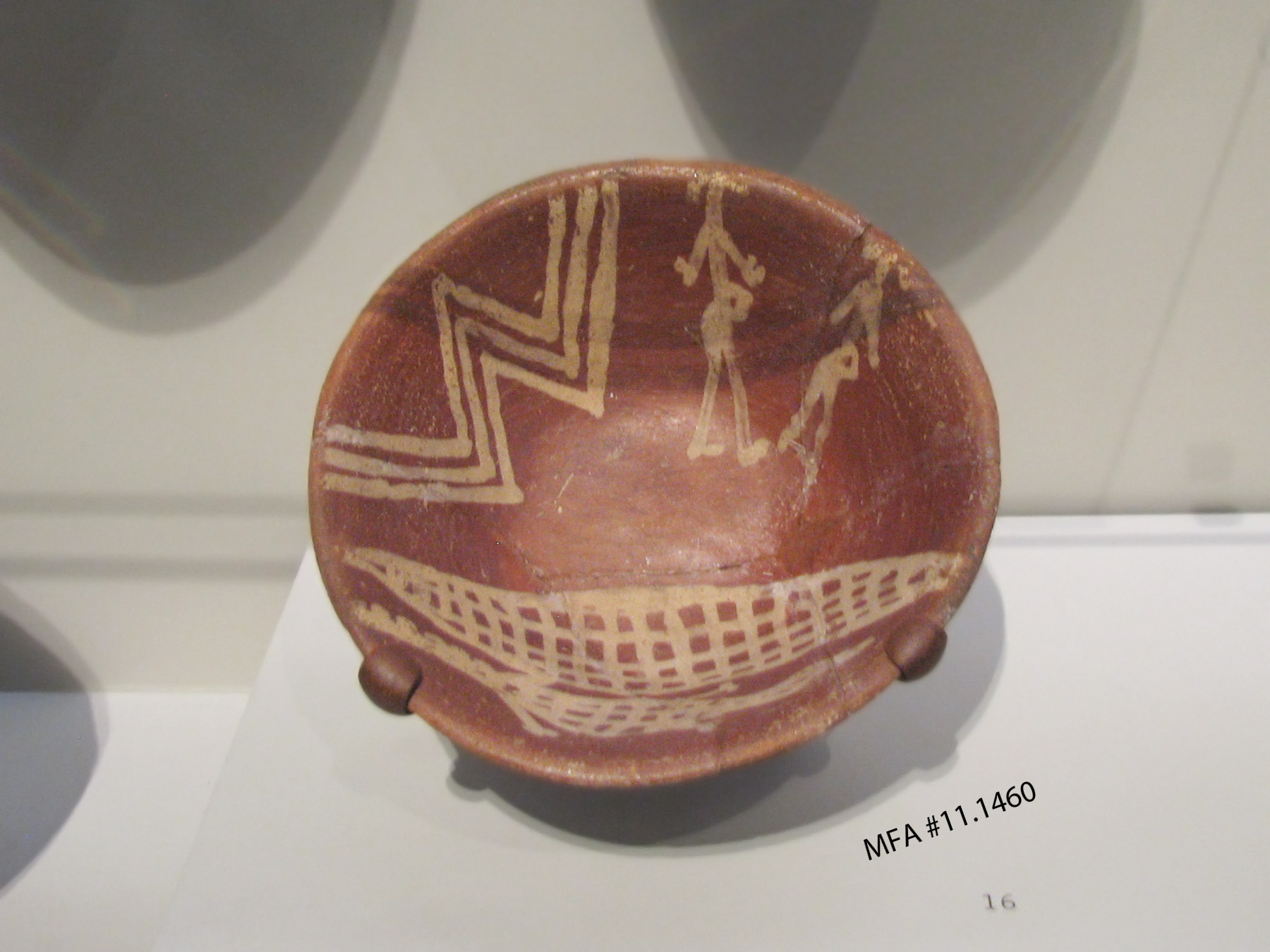
 Bowl with human feet Egypt (Naqada), Naqada I, about 3850-3650 BCE Pottery (Nile silt ware) Emily Esther Sears Fund 1903, MFA #03.1954
Tall footed jar
|
 Ripple flaked knife Egypt, said to be from Naqada, Naqada I, about 3850-3650 BCE Flint, Width x length: 5 x 21.5 cm (1 15/16 x 8 7/16 in.) Emily Esther Sears Fund 1903, MFA #03.1390
Double vase
|
 Bowl with gazelle comb and triangle motif Egypt, Mesaid, tomb 763; Naqada I (Amratian) 3850–3650 B.C.E. Pottery (Nile silt ware), Diameter: 15.7 cm (6 3/16 in.) Harvard University-Museum of Fine Arts Expedition 1913, MFA #13.3935 |
 Jar with boats and plants Egypt, Mesaid, tomb 102, no. 9 ; Naqada II, 3650–3300 B.C.E. Pottery (Marl clay ware), Height x diameter: 10.5 x 8.4 cm (4 1/8 x 3 5/16 in.) Harvard University-Museum of Fine Arts Expedition 1913, MFA #11.308 |
 Bowl with crocodile hunt Egypt, (Abydos) cemetery U.; Naqada I, 3850–3650 B.C.E. Pottery (Nile silt ware), Height x diameter: 6.2 x 15.6 cm (2 7/16 x 6 1/8 in.) Egypt Exploration Fund by subscription 1911, MFA #11.1460 "Shallow bowl of red Nile sily clay; hand polished; with white line decoration showing a scene of two men using a net to capture a crocodile." (From museum website) |
Forward...
Go Back to Archives...
Go Back to Main Journal Index Page...
Go to Index of Joan's pages...
![]()
© Joan Ann Lansberry